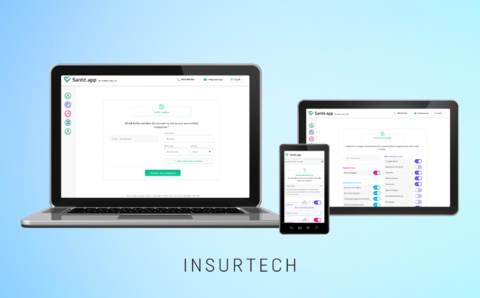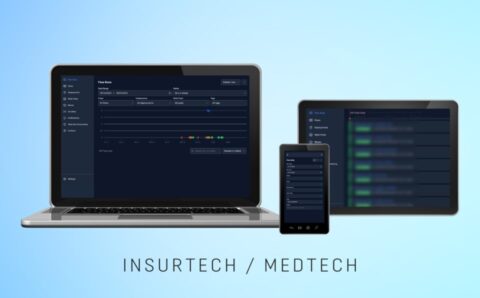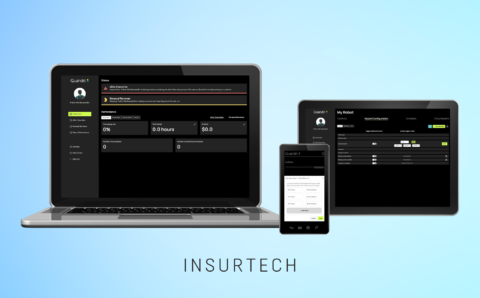
The insurance industry heavily relies on the ability to extract, combine, and leverage data from different sources and obtain a full view of it. The concept of data integration is a fundamental practice that holds the massive capacity for the ways insurance businesses operate, build strategies, and cater to their customers.
Data integration implies seamlessly merging various data sources as well as formats like policyholders’ databases, claims histories, industry statistics, and financial records, into an amalgamated, full, coherent format. This procedure surpasses the traditional assembly of data; in practice, it helps insurers extract valuable information insights, optimize operations, elevate customer experiences, and, consequently, take a competitive advantage to elevate the business in the market. Critical industry processes like risk assessment, underwriting, claims processing, and customer interactions are guaranteed to get a boost in the case of accurate and timely information gathering, processing, and further investigation.
In this article, we will delve into the concept and advantages of data integration for insurance. Explore how data integration can enhance your business efficiency, deliver personalized customer experiences, and make use of predictive analytics.
Table of Contents:
Streamlining Data Sources
The consolidation and coordination of data sources allow insurers to obtain a deeper view of the business and streamline operations. At first glance, the path to harmonize and manage disparate data sources may seem complex, but the benefits are definitely much more vital.
Policyholder information might be stored in legacy systems, policy details reside across databases, and claims records are disseminated within diverse platforms. Such fragmentation becomes a setback for efficiency and also interferes with the opportunity to achieve comprehensive details into risk assessment, customer behavior, and market trends.
Consolidating Data from Various Channels
When gathering data from disprate channels, data integration for insurance becomes a powerful tool to handle the data consolidation challenge. By reconciling data from diverse channels, data integration creates fully-fledged, unified storage. With this consolidation, insurers can streamline claims processing operations and access a profound view of their customers, policies, and processes. It has the potential to successfully interconnect different departments within an insurance business, enhancing collaboration and informed decision-making.
The Significance of Clean and Standardized Data
The power of data integration isn’t bounded by consolidation; it extends to achieving higher cleanliness and standardization. This ensures that data adheres to consistent formats in its turn. Sticking to these techniques helps reduce errors, prevents redundancy, and improves data quality, ultimately enhancing the reliability of analytics and reporting.
Enhanced Customer Insights
Customer-centricity is what can make a business stand out from the crowd. That´s why insurers strive to gain a full understanding of their policyholders. Data integration offers the capacity to create a 360-degree view of customers that surpasses the surface-level details and goes much deeper. This in-depth view incorporates historical claims, policy interactions, lifestyle data from IoT devices (e.g., fitness bands, interconnected cars), and even comprehensive research from customer service interactions. Insurance businesses interconnect these varied data sources, to get a deeper understanding of the policyholders’ requirements, and ensure a more personalized service.
Full View of Customers
With data integration, insurers can smoothly amalgamate data from a range of required touchpoints, such as policy applications, claims histories, interaction records, and even third-party sources like social media. Such an approach helps insurance companies gain a deep overview of customer behaviors, preferences, and needs. This presents a solid perspective that assists in the following:
-
-
- Risk management and prediction by considering the customer’s entire history and behavior patterns
-
- Tailored policies that better address individual needs and circumstances, enhancing customer satisfaction
- Cross-selling and upselling opportunities become more precise when insurers have a comprehensive understanding of their customers
-
Personalized Customer Experience
Personalization goes hand in hand with modern customer engagement and retention, and data integration serves as the key to its implementation in the insurance domain. This way, the efficient integration of data enables insurers to deliver individual and tailored customer experiences that not only reflect but surpass expectations.
-
-
- Client base loyalty, achieved by showcasing that insurers comprehend and precisely address individual needs
-
- Cut down churn rates due to tailored experiences that reduce the probability of customers switching insurers
- Longer customer lifetime value because of satisfied, loyal customers who are more likely to stay with an insurer for the long term
-
Upgrade Your Insurance Software
Learn the essential features that modern insurance software needs to thrive in the digital age.
Risk Assessment and Underwriting
High accuracy in risk assessment and underwriting helps insurance businesses identify, evaluate, and mitigate potential threats and vulnerabilities, build relevant strategies, and safeguard against adverse outcomes. With data integration, these critical functions are much easier to complete.
Data integration enables insurers to access a huge amount of information that can help them effectively assess risks. The data streams is relate to historical data, IoT devices, telematics, and many more. The cohesive gathering of data allows insurers to elaborate their risk assessment models. They provide a more accurate understanding of individual risk profiles, leading to more precise pricing and risk mitigation strategies.
77% of insurers keep tracking or adopting risk management strategies, while risks related to data security have become a core source of consideration in particular. Insurers put effort into privacy rights and protection (71%), data protection laws (73%, and cyber regulation (73%), according to a PWC report.
The Role of Real-Time Data in Underwriting
Real-time data, being a product of data integration, equips insurers with a dynamic sight of policyholders’ circumstances. The up-to-date information is inalienable for more responsive underwriting decisions. To illustrate, in auto insurance, real-time data from telematics gadgets can adapt premiums according to actual driving behaviors, facilitating safer driving and decreasing claims.
Claims Processing Efficiency
Claims processing directly impacts customer satisfaction and operational costs. Here, the benefits of data integration in insurance allow the acceleration of the claim evaluation process, as well as raise its accuracy and reliability.
Integrated data liquidates the necessity for manual data entry and coordination, significantly expediting claims processing. When essential information from various sources, such as policy information, accident reports, and medical records, efficiently flows into a fully-fledged solution, claims adjusters can quickly assess claims, make decisions, and disburse payments. This boosts the process and decreases turnaround times, ensuring that policyholders receive their claims faster, as a result enhancing overall client satisfaction.
Fraudulent Claims Reduction
Integrated data facilitates the detection of inconsistencies and anomalies, making it more challenging for fraudulent claims to go unidentified. By leveraging advanced analytics, insurers can identify suspicious patterns and flag potentially fraudulent claims early in the process. Therefore, insurers save substantial amounts and contribute to the integrity of the insurance system.
Numerous insurance companies have embraced data integration to modernize their claims processing operations. For example, Lemonade, a digital insurance startup, has implemented AI-powered chatbots for claims processing. With the Lemonade app, customers can initiate claims, and the chatbot efficiently evaluates and approves straightforward claims. This state-of-the-art approach has notably minimized the time and effort expended by both policyholders and the company.
Regulatory Compliance
Adherence to industry regulations is a vital component that safeguards the interests of both insurers and policyholders. Ensuring compliance with a set of domain guidelines is obligatory, as it maintains market integrity, protects consumers, and supports the industry’s reputation for trustworthiness.
Compliance with regulations such as Dodd-Frank Act, Nonadmitted and Reinsurance Reform Act (NRRA), and Affordable Care Act (ACA) are essential to adhere to legal requirements related to financial stability, reinsurance practices, and healthcare coverage, respectively. Failure to comply can result in hefty fines, legal repercussions, damage to reputation, and a loss of customer trust. In fact, organizations spend roughly $14,823,397 on the cost of non-compliance for activity centers, according to Globalscape.
Data integration provides a centralized system for data management and reporting. It enables insurers to track and manage data in real time, ensuring that they adhere to industry-specific data security and privacy regulations. Besides, data integration enhances transparency, making it easier for insurers to demonstrate compliance with regulatory bodies.
Illustrating the consequences of inadequate data management and regulatory non-compliance, we can mention Equifax. It has faced severe backlash and penalties for a data breach that compromised the personal sensitive details of millions of individuals.
Fraud Detection and Prevention
The integration of data plays a critical role in strengthening the defenses against fraudulent activities. In addition, leveraging cutting-edge technologies like AI and Machine Learning takes these efforts to a new level.
Data integration empowers insurers to unite together a more comprehensive and accurate look at policyholders, claims, and interactions. As a result, insurers can retrieve data from a range of sources to detect uncommon tendencies and activities that may indicate potential fraud.
The Value of AI and Machine Learning in Fraud Detection
The benefits of data integration for insurance, accompanied by AI and Machine Learning, represent a powerful combination against fraud. These technologies are important in analyzing enormous data loads and determining complex, non-obvious patterns, indicative of fraudulent activities. AI-driven algorithms keep training and adapting while staying ahead of pretty sophisticated fraudulent methods.
At PLANEKS, we have firsthand experience helping insurance companies overcome data integration challenges and transform their operations. One of our clients, a mid-sized insurer, struggled with fragmented data spread across legacy systems and third-party platforms. By implementing a tailored data integration solution, we consolidated customer records, claims histories, and financial data into a unified system. This enabled the client to gain a comprehensive view of policyholders, streamline risk assessments, and significantly reduce manual processing times. As a result, claims approval timelines were cut by 40%, and customer satisfaction scores improved within just a few months.
In another project, we partnered with an insurer aiming to enhance fraud detection capabilities. Leveraging advanced data integration paired with AI algorithms, we enabled real-time cross-referencing of claims data, policyholder behavior, and external data sources. This proactive approach helped identify suspicious claims early, reducing fraud-related losses by over 25%. These experiences highlight how strategic data integration, when driven by a skilled and experienced team, can yield measurable results in operational efficiency, compliance, and customer experience.
Improved Operational Efficiency
Data integration can become your core solution in achieving elevated business efficiency, fundamentally modifying how your insurance company manages processes and resources.
Reduced Manual Data Entry and Errors
Among the pros of data integration is that insurers can automate data capture and validation, eliminating the need for laborious manual entry. Therefore, the process is accelerated with the minimized risk of human failures that can lead to costly discrepancies and compliance issues. With streamlined data flows, insurers can allocate their workforce towards higher-value tasks, such as complex claims assessment and client catering.
At PLANEKS, we’ve witnessed how data integration can transform operations within the insurance sector. One of our clients, an insurtech firm, faced challenges in reconciling fragmented data from legacy systems and disparate software platforms. By developing a robust integration framework, we enabled them to consolidate policyholder information, claims histories, and financial records into a unified view. This not only improved data accuracy and compliance but also empowered their underwriting teams to make faster, data-driven decisions. Our experience demonstrates that effective data integration is key to enhancing operational efficiency and customer satisfaction in the insurance industry.
Cost savings
Beyond its time-saving benefits, data integration offers a substantial cost economy for insurers. By streamlining operations and reducing the need for manual interventions, insurers can cut down operational overheads substantially. Moreover, the mitigation of errors and improved data accuracy directly facilitate cost decreases associated with fixing mistakes, handling disputes, and regulatory fines.
Optimize with Data Integration
Unlock your data’s potential for streamlined operations and fraud detection.
Data Security and Privacy
The insurance sector handles an extensive amount of sensitive and financial data, making it a huge target for cyber threats and breaches. Consequently, ensuring robust data security and privacy measures is a fundamental necessity.
Insurers collect and store vast amounts of data, such as personal, financial, and health details. A breach could lead to severe financial penalties, loss of customer trust, and substantial legal consequences. Moreover, data breaches can expose individuals to identity theft, fraud, and other malicious activities. This makes protecting this data an obligation to policyholders.
Data integration can allow insurers to implement more robust access controls, encryption protocols, and monitoring systems. This centralized approach makes it easier to identify and respond to potential security threats faster. Moreover, data integration allows for more comprehensive data auditing and tracking, further endorsing security efforts by optimizing data management, making it easier to monitor access, changes, and data flow.
Here are some tips that might help you in safeguarding sensitive customer information:
-
-
- Encryption techniques to secure data both in transit and at rest
-
- Access controls ensure that only authorized parties can access sensitive information
-
- Regular audits and vulnerability assessments help identify and rectify security weaknesses
-
- Employee training on data security best practices highlights the importance of safeguarding customer information and taking proactive measures
-
- Regular data backup minimizes the impact of data loss in the event of a breach or system failure
- Incident response plan enables to mitigate the impact of potential breaches and respond swiftly
-
All in all, companies that apply the benefits of data integration in the insurance industry can gain a competitive edge, enhance their ability to provide customized services, make data-driven decisions, and seamlessly adapt to changing market dynamics. The current market conditions make insurance businesses introduce this data-driven transformation to their workflows and deliver a rich spectrum of benefits in turn. Thus, the insurance domain enters the future where data integration is the core of success.

Santé.app
Santé.app efficiently matches users with health insurance options using auto surveys, streamlining a comparison process & optimizing selections.

AI Platform
By automating critical admin processes, our AI solution boosts efficiency and improves service quality in healthcare institutions across Europe.

Robot Factory
Our collaboration with Quandri delivered Robot Factory, streamlining insurance processes & optimizing document management with automated robots.

